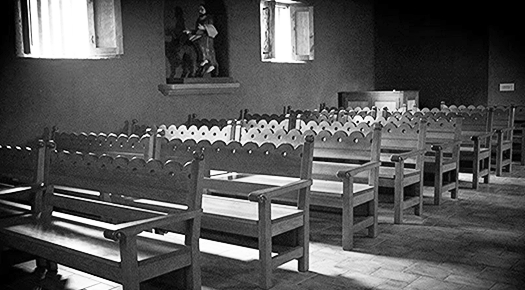
Photo Credits: National Catholic Reporter
The Pew Research Center conducted Religious Landscape Surveys in 2007 and 2014 and they will certainly reveal another major study about U.S. religious landscape soon. Until then, the Pew Research Center conducted telephone surveys in 2018 and 2019 and they have important information to share.
In Pew Research Center telephone surveys conducted in 2018 and 2019, 65% of American adults describe themselves as Christians when asked about their religion, down 12 percentage points over the past decade. Meanwhile, the religiously unaffiliated share of the population, consisting of people who describe their religious identity as atheist, agnostic or “nothing in particular,” now stands at 26%, up from 17% in 2009.
[Please center infograph here] https://i.imgur.com/MRFRnFL.png?1
Both Protestantism and Catholicism are experiencing losses of population share. Currently, 43% of U.S. adults identify with Protestantism, down from 51% in 2009. And one-in-five adults (20%) are Catholic, down from 23% in 2009. Meanwhile, all subsets of the religiously unaffiliated population — a group also known as religious “nones” — have seen their numbers swell. Self-described atheists now account for 4% of U.S. adults, up modestly but significantly from 2% in 2009; agnostics make up 5% of U.S. adults, up from 3% a decade ago; and 17% of Americans now describe their religion as “nothing in particular,” up from 12% in 2009.
Beside questions about people’s religious affiliation, there were questions about religious service attendance - “Aside from weddings and funerals, how often do you attend religious services? More than once a week, once a week, once or twice a month, a few times a year, seldom, or never?”

The data shows that just like rates of religious affiliation, rates of religious attendance are declining. In 2009, regular worship attenders (those who attend religious services at least once or twice a month) outnumbered those who attend services only occasionally or not at all by a 52%-to-47% margin. Today those figures are reversed; more Americans now say they attend religious services a few times a year or less (54%) than say they attend at least monthly (45%).
The data suggests that Christians are declining, not just as a share of the U.S. adult population, but also in absolute numbers. In 2009, there were approximately 233 million adults in the U.S., according to the Census Bureau. Pew Research Center’s RDD surveys conducted at the time indicated that 77% of them were Christian, which means that by this measure, there were approximately 178 million Christian adults in the U.S. in 2009. Taking the margin of error of the surveys into account, the number of adult Christians in the U.S. as of 2009 could have been as low as 176 million or as high as 181 million.
